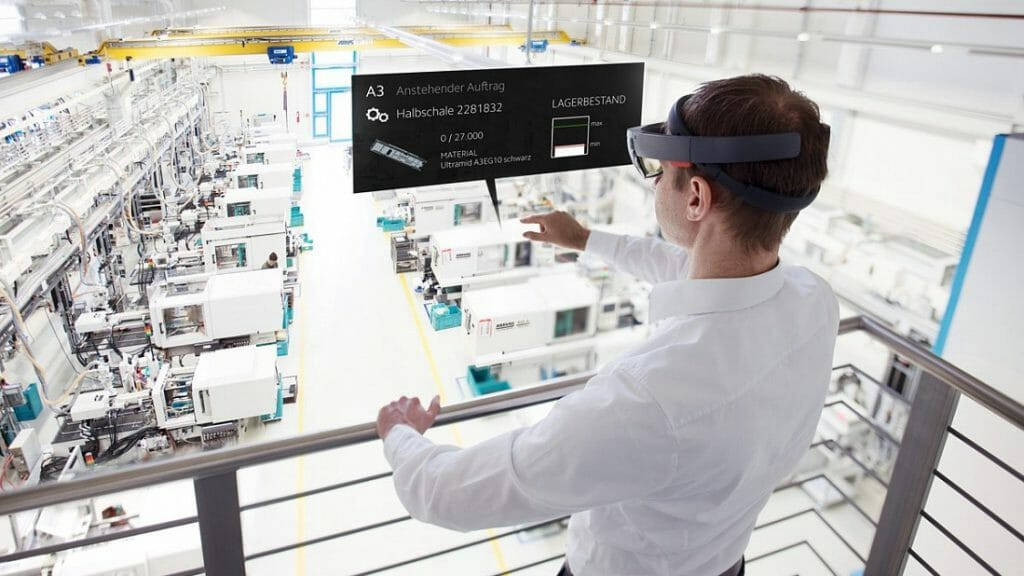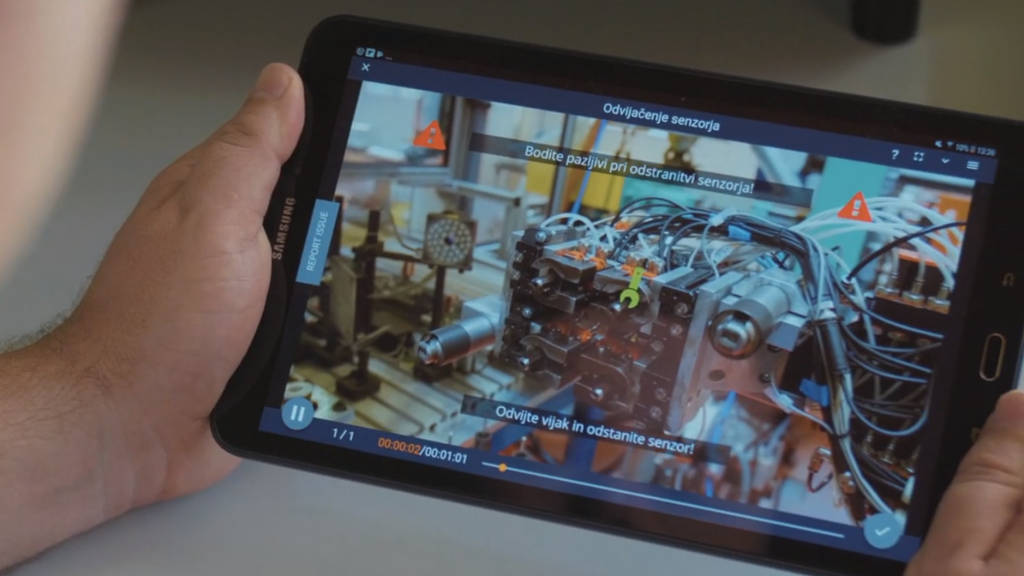Originally published at REWO.io.
When we think about Industry 4.0 or the “Smart Factory”, a few things come immediately to mind — IIoT, robots, 3D printing for example. There is unfortunately not enough attention given to the worker in this emerging industrial world unless it is to discuss concerns over potential job losses. But experts agree that the transformation underway will result in net job creation, not loss. They also agree that different skills will be needed, and overall, workers will need to be more skilled. The number of physically demanding or routine jobs will decrease, while the number of jobs requiring flexible responses, problem-solving, and customization will increase. The key to supporting the development of these skills in our workforce is to provide access to information and to build a culture of continuous learning.
What is Industry 4.0?
When computers were introduced in Industry 3.0, it was disruptive thanks to the addition of an entirely new technology. Now, and into the future as Industry 4.0 unfolds, computers are connected and communicate with one another to ultimately make decisions without human involvement. A combination of cyber-physical systems, the Internet of Things and the Internet of Systems make Industry 4.0 possible and the smart factory a reality. As a result of the support of smart machines that keep getting smarter as they get access to more data, our factories will become more efficient and productive and less wasteful. Ultimately, it’s the network of these machines that are digitally connected with one another and create and share information that results in the true power of Industry 4.0.
Industry 4.0 employs the use of technologies such as Big Data, Industrial Internet of Things, Artificial Intelligence, Augmented Reality, Virtual Reality, and others to find solutions to complex problems and make the assembly line more efficient. According to a PWC report called ‘Industry 4.0: Building the Digital Enterprise’, we are already in the front and center of this revolution with over 72% of manufacturing companies using data analytics to improve customer intelligence and customer service. 35% of companies adopting Industry 4.0 expect 20% higher returns over the next 5 years, and 86% of manufacturers expect lower costs and higher revenues.
Why is manufacturing moving towards Industry 4.0?
Since Industry 4.0 is built on the concept of end-to-end visibility, efficiency, and agility across every touch point in the value chain, it gives manufacturers the capability to assess how they can reduce overhead costs while remaining flexible to respond to unforeseen changes in production programs.
Industry 4.0 is more than just production. It is all about how smart and connected technologies can change the way products are designed, built, used and maintained. Apart from transforming the production cycle, Industry 4.0 also transforms the organization itself by presenting new ways to consume and interpret information and achieve operational excellence by improving decision making. Deutsche Bank Research, in their report the ‘New Industrial Revolution’ states that the smart manufacturing initiatives show a productivity jump of almost 30%.
Clearly, Industry 4.0 is not just about the shop floor but also about the entire organization and how technology can be used to harness growth. We are seeing increased use of sensors and wearables, machine learning, advanced computer numerical control, and robotics to enable product improvements, and rapid prototyping to consequently enable innovation in new offerings. The impact of Industry 4.0 can be felt by how the organization operates and also how its ecosystem of customers, regulatory compliance, third-party experts, suppliers, etc. function and interact. It focuses on improvements that lead to enhancements to productivity, better risk reduction, incremental revenue growth, and generating new revenue sources.
Industry 4.0 also brings a shift in training needs
The rise of automation and connected systems also signals workforce transformation. And this is where the manufacturers’ dilemma begins. Manufacturers not only have to lure tech-savvy talent but also have to reskill or upskill existing resources to harness the power of the new disruptive manufacturing technologies. A highly technologically advanced environment means more employee contributions revolving around technology, digital, and intelligence roles. The isolated, optimized units need to work together as completely integrated automated units with optimized production flows. These developments change traditional production relationships.
Given the complete change in the manufacturing ecosystem, it becomes imperative to prepare the workforce and conduct strategic workforce planning. For this, manufacturing companies have to look at hiring skilled resources for new job roles, adapting existing roles to the new methodologies, and upgrading technical skills of all resources. Industry 4.0 also means a greater focus on compliance, regulatory, and security aspects, and demands all investments to be thoroughly updated on all new developments in these areas.
Since Industry 4.0 is a paradigm shift in itself, manufacturers have to ensure that all resources are suitably skilled to handle their new roles and responsibilities and are capable of managing the change in work patterns and in processes. Training and development, thus, becomes a key area to concentrate on to enable this workforce evolution.
In the age of Industry 4.0, manufacturers need to prepare their entire workforce to harness the power of technology. This means frequent training and updated Learning and Development initiatives that address the pain points and learning gaps of the existing workforce. It also means accelerated onboarding and skill upgrades for the new hires to make them multi-skilled.
How to prepare for Industry 4.0?
In order to be prepared for this, manufacturers have to ensure that all their resources are up to step to face the new order. Learning and Development initiatives have to be more inclusive and take into consideration the varying needs of the resources. To achieve great training outcomes and to ensure that training costs are controlled, manufacturing companies need a new age training program … one that is complementary to the new age manufacturing unit.
Given the large resource pool that needs training, the diverse training needs of the workers — a large and often distributed workforce — manufacturing industries need a new training model that can proactively improve resource knowledge base. Training programs have to be more scalable, personalized, and flexible to adjust to the dynamic needs of Industry 4.0.
To perform effectively with Industry 4.0, workers will need to apply a variety of “hard” skills. They will have to combine know-how related to a specific job or process, such as techniques for working with robots or changing tools on machines, with IT competencies that range from basic (using spreadsheets and accessing interfaces) to advanced (applying advanced programming and analytic skills). The need for multiple hard skills and the unprecedented scope of changes on the shop floor mean that “soft” skills will become more important than ever. Employees will have to be even more open to change, possess greater flexibility to adapt to new roles and work environments and get accustomed to continual interdisciplinary learning.
How will industrial jobs evolve?
Although the extent to which Industry 4.0, especially robotics, will replace human labor remains a matter of debate among experts, there is a universal agreement that manufacturers will increasingly use robotics and other advancements to assist workers. Some experts argue against the notion that all manufacturing jobs can be automated. The increased use of assistance systems means that the qualitative changes brought about by Industry 4.0 will likely be positive for the workforce. The number of physically demanding or routine jobs will decrease, while the number of jobs requiring flexible responses, problem-solving, and customization will increase. Several examples below illustrate how Industry 4.0 changes the nature of the work.
Automotive Assembly-Line Worker
The use of automation to assist workers with manual tasks will be particularly valuable in responding to the needs of the aging workforce in many developed countries. For instance, some automotive assembly-line work currently requires heavy lifting and entails awkward physical positions. A robotic device could be used to relieve a line worker from physically demanding tasks as well as to improve ergonomics. For example, a robot could lift a car’s interior-finishing elements, such as a roof lining, into the chassis and, after manual alignment by a worker, automatically affix the part to the chassis.
Mobile Service Technician
Industry 4.0 will dramatically improve the productivity of service technicians in the field. Today’s service technicians may spend only a few hours each day on value-added work at a single site. Most of their workday is spent traveling to the site and discussing the service problem and a solution with other experts or second-level support colleagues. Manual operations throughout the end-to-end process result in significant delays and downtime. In contrast, Industry 4.0 will enable technology-assisted, predictive maintenance. By remotely reviewing a stream of real-time data on machine performance, the technician will be able to proactively identify defects and order spare parts before arriving at a site. Once on-site, the technician will be assisted in making repairs by augmented-reality technology and will be able to receive remote guidance from experts off-site. The work will also be automatically documented. These productivity improvements will reduce total machine downtime from one day to two hours, providing significant benefits to the customer and enabling the technician to work at multiple sites each day.
Machine Operator
Today, a machine operator is responsible for handling work-in-progress and monitoring performance and product quality at a single machine. Industry 4.0’s advancements will make it possible for an operator to carry out the same types of responsibilities at several machines. Standard operating procedures for any given task will be displayed on screens or glasses. The monitoring of machine performance and product quality will be aided by quality control queries provided by an automated system. Consequently, the operator will require less machine- and product-specific training but will need enhanced capabilities for utilizing digital devices and software and accessing a digital knowledge repository.
Conclusion
According to Deloitte, most manufacturing executives are optimistic about the potential impact of Industry 4.0, and a full 84 percent of manufacturing CXOs are doing everything they can to prepare their workforces for the challenges and opportunities ahead. It is now clear that Industry 4.0 is going to help manufacturers stay ahead of the curve in an increasingly competitive and complex market. However, in order to deliver on its promise, manufacturers have to make sure that they arm their workforce with the right tools to do their jobs better. And in this case, there is no tool that is greater than knowledge.


